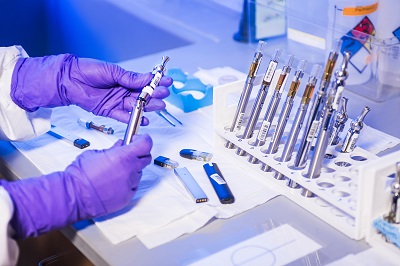The procedures for Class C medical device registration in Indonesia under the Ministry of Health (MOH), specifically through BPOM (Badan Pengawas Obat dan Makanan), involve a series of steps to ensure that the device meets all regulatory requirements for safety, quality, and effectiveness. Class C devices are categorized as moderate-risk devices, and the registration process requires more comprehensive documentation than lower-risk devices (Class A and B). Below is an overview of the procedure:
Step-by-Step Procedure for Class C Medical Device Registration in Indonesia
1. Appoint a Local Authorized Representative
If you are a foreign manufacturer, you must appoint a local authorized representative or distributor in Indonesia. The authorized representative will be responsible for the registration process and communication with BPOM.
- Local presence: The representative should be registered with BPOM and have the legal authority to act on behalf of the manufacturer.
Required documents for the authorized representative:
- Letter of appointment from the manufacturer.
- Registration documents of the representative (if applicable).
2. Classify the Device
Before applying, verify the device classification to ensure that it is indeed a Class C device. This classification determines the level of risk associated with the device and the corresponding regulatory requirements.
- Class C devices are moderate-risk devices such as diagnostic imaging equipment, therapeutic equipment, and certain surgical instruments.
You can classify the device according to the Indonesian Medical Device Regulation or seek BPOM’s guidance if you are uncertain.
3. Prepare Required Documents
Gather and prepare all the necessary documentation for registration. The documents required for Class C registration typically include:
- Device Description: A detailed description of the device, including its intended use, materials, and components.
- Manufacturing Information: Name and address of the manufacturer, proof of manufacturing capability, and a declaration of conformity.
- Clinical Data: For Class C devices, BPOM may require clinical trial data or evidence of safety and effectiveness.
- Risk Management Report: A report that complies with ISO 14971, outlining the risks associated with the device and how they are mitigated.
- ISO Certifications: Proof of compliance with ISO 13485 for the manufacturer’s Quality Management System.
- GMP Compliance: A certificate of Good Manufacturing Practice (GMP) from the manufacturer, or if the manufacturing site is abroad, certification from recognized health authorities such as the FDA or EMA.
- Labeling Information: Product labels and instructions for use in Bahasa Indonesia.
- Market Authorization from Other Countries: If the device is approved in another country, provide a market authorization certificate.
- Declaration of Conformity: A statement from the manufacturer that the product meets all relevant Indonesian and international standards.
4. Submit the Application via BPOM’s e-Registration System
The application for Class C medical device registration must be submitted via the BPOM e-Registration system, which is the electronic platform used for medical device and pharmaceutical registrations in Indonesia.
- Create an Account: If the applicant (or local representative) does not already have an account on BPOM’s e-Registration system, an account must first be created.
- Fill Out the Application Form: Complete the online application form with device details, company information, and registration type.
- Upload Documents: Upload the prepared documents (device description, clinical data, certifications, labeling, etc.) to the e-Registration system.
- Pay Fees: Registration fees must be paid through the e-Registration portal using the available payment options.
5. BPOM Review Process
After submitting the application, BPOM will conduct a thorough review process. This review typically includes the following stages:
Administrative Review:
- BPOM checks for the completeness of the application and the accuracy of the documents submitted.
- Any missing documents or errors will result in BPOM requesting additional information from the applicant.
Technical and Scientific Evaluation:
- BPOM reviews the technical specifications of the device to ensure it meets regulatory requirements for safety, performance, and efficacy.
- The clinical data (if required) and risk management reports will be assessed to confirm that the device is safe for use.
- BPOM may request additional clarifications if the data provided is insufficient or unclear.
GMP Inspection (if applicable):
- If the manufacturing facility is located outside Indonesia, BPOM may request a GMP inspection or may accept GMP certification from a recognized regulatory authority (e.g., FDA, EMA, or PMDA).
- The inspection ensures that the manufacturing facility complies with international standards for Good Manufacturing Practices.
6. Issuance of Marketing Authorization (NOM)
Once BPOM is satisfied with the application and evaluation results, they will issue a Marketing Authorization (NOM) and Registration Certificate for the device.
- NOM (Nomor Registrasi): This is the official approval granted by BPOM to market and distribute the medical device in Indonesia.
- Registration Certificate: This certificate confirms the device's registration status in Indonesia.
The device can then be legally marketed and sold in Indonesia.
7. Post-Market Surveillance and Ongoing Compliance
After the device is registered, the manufacturer and local representative are responsible for ongoing post-market surveillance. This includes:
- Adverse Event Reporting: If the device causes any adverse events or malfunctions, BPOM must be notified promptly.
- Market Monitoring: Manufacturers must monitor the performance of the device on the market and submit periodic reports to BPOM.
- Product Recall: If there are safety concerns or issues with the device, BPOM may request a product recall.

Whatsapp or Wechat:+86 15816864648;email address:hito.lin@grzan.cn
.png)
.jpg)
.png)

.png)